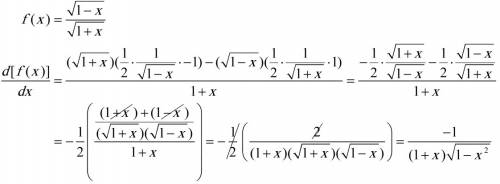
Mathematics, 01.07.2019 03:00 Jamalmcc8nh78
By first differentiating (√(1-x))/(√(1+x)) obtain an expression dy/dx in terms of x. hence show that the gradient of the normal to the curve at point (x, y) is (1+x)(√(1-x^2))

Answers: 1
Another question on Mathematics

Mathematics, 21.06.2019 16:50
Suppose that the price p (in dollars) and the weekly sales x (in thousands of units) of a certain commodity satisfy the demand equation 4p cubedplusx squaredequals38 comma 400. determine the rate at which sales are changing at a time when xequals80, pequals20, and the price is falling at the rate of $.20 per week.
Answers: 3

Mathematics, 21.06.2019 17:30
The jewelry store is having a sale. necklaces that were regularly priced at $23.50 are on sale for $18.80. what is the percentage of decrease in the price of necklaces?
Answers: 1

Mathematics, 21.06.2019 19:30
Піf x = y and y= z, which statement must be true? оа. -x = -2 b. x= z ос. —x = 2 od. 2= x
Answers: 3

Mathematics, 21.06.2019 19:30
The total ticket sales for a high school basketball game were $2,260. the ticket price for students were $2.25 less than the adult ticket price. the number of adult tickets sold was 230, and the number of student tickets sold was 180. what was the price of an adult ticket?
Answers: 2
You know the right answer?
By first differentiating (√(1-x))/(√(1+x)) obtain an expression dy/dx in terms of x. hence show that...
Questions

Chemistry, 05.09.2020 07:01



Social Studies, 05.09.2020 07:01










Social Studies, 05.09.2020 07:01



Mathematics, 05.09.2020 07:01


Mathematics, 05.09.2020 07:01




